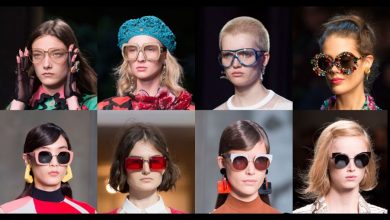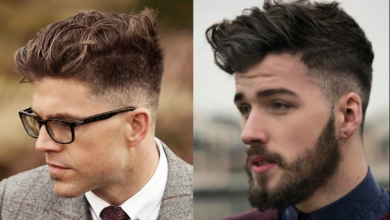
The 1940s was a pivotal decade that saw significant changes in men’s hairstyles, influenced by factors such as World War II, the rise of Hollywood icons, and evolving cultural norms. From the practical and conservative styles necessitated by wartime to the emergence of more expressive and stylized looks in the post-war years, the 1940s laid the foundation for many of the classic men’s hairstyles that remain popular to this day.
In this article, we will explore the most iconic and influential men’s hairstyles of the 1940s, the cultural context that shaped them, and the enduring legacy they have left on men’s grooming.
Key Takeaways
- World War II had a significant impact on men’s hairstyles in the early 1940s, with practical, low-maintenance styles like the crew cut and buzz cut becoming popular among servicemen.
- In the post-war years, men’s hairstyles began to evolve, with longer tops and styles like the pompadour and ducktail emerging as symbols of youthful rebellion and coolness.
- Hollywood stars and cultural icons played a key role in shaping 1940s men’s hairstyles, with figures like Cary Grant, Frank Sinatra, and Nat King Cole setting trends and influencing popular looks.
- To achieve the iconic styles of the 1940s, men relied on grooming products like pomade, hair oil, and tonic, as well as techniques such as combing, brushing, and blow-drying.
- The hairstyles of the 1940s have left a lasting impact on men’s grooming, with many classic looks enduring as timeless choices and inspiring modern interpretations and vintage revivals.
The Impact of World War II on 1940s Men’s Hairstyles
The early 1940s were dominated by World War II, which had a profound impact on men’s fashion and grooming. With many men serving in the military, practical and low-maintenance hairstyles became the norm.
The Military Influence
- Crew Cut: The crew cut, characterized by short hair on the sides and back with slightly longer hair on top, was a popular choice among servicemen due to its neat and easy-to-maintain style.
- Buzz Cut: Even shorter than the crew cut, the buzz cut involved cropping the hair very close to the head using electric clippers. This style was favored for its simplicity and hygiene in the often harsh conditions of military life.
Civilian Hairstyles During Wartime
- Short and Neat: Even for civilians, hairstyles during the early 1940s tended to be short and conservative. Men typically wore their hair short on the sides and back, with a bit more length on top that could be combed back or parted to the side.
- Limited Styling Products: Due to rationing and shortages, styling products like pomade and hair oil were less readily available, leading to simpler, more natural-looking hairstyles.
Post-War Hairstyles: The Emergence of New Trends
As World War II came to an end and society began to recover, men’s hairstyles started to evolve, influenced by the optimism and cultural shifts of the post-war years.
The Rise of the Pompadour
- Longer Tops: In the late 1940s, men began to wear their hair longer on top, often styled into a pompadour or quiff. This look, characterized by hair swept up and back from the forehead, would become increasingly popular in the 1950s.
- Hollywood Influence: The pompadour style was popularized by Hollywood stars like Elvis Presley and James Dean, who helped to establish it as a symbol of youthful rebellion and coolness.
Slicked-Back Styles
- Classic Look: The slicked-back hairstyle, achieved by combing the hair straight back from the forehead using pomade or hair oil, remained a popular choice throughout the 1940s. This look was often associated with a sense of sophistication and refinement.
- Variations: Some men opted for a side-parted version of the slicked-back style, which involved creating a deep side part and combing the hair back and to the side.
The Ducktail
- Longer Backs: The ducktail, also known as the duck’s ass or D.A., emerged in the late 1940s. This style featured hair that was longer in the back, often slicked back on the sides, and combed into a central ridge or point at the back of the head.
- Subculture Associations: The ducktail became associated with various youth subcultures, such as greasers and rockabilly fans, and would remain popular well into the 1950s.
Iconic Figures and Their Influence on 1940s Men’s Hairstyles
Throughout the 1940s, certain influential figures, particularly from the world of entertainment, played a significant role in shaping men’s hairstyles and setting trends.
Hollywood Stars
- Cary Grant: Known for his debonair style, Cary Grant often sported a classic side-parted, slicked-back hairstyle that epitomized the sophisticated look of the 1940s.
- Clark Gable: Clark Gable’s signature look included a short, side-parted hairstyle that was neatly combed and often accompanied by a thin mustache.
- Humphrey Bogart: Humphrey Bogart’s slightly longer, wavy hair and iconic side-parted style became synonymous with the tough-guy image he portrayed on screen.
Musicians and Cultural Icons
- Frank Sinatra: As a rising star in the 1940s, Frank Sinatra’s slicked-back hairstyle and signature quiff became a symbol of cool and laid-back elegance.
- Bing Crosby: Bing Crosby’s neatly combed, side-parted hairstyle was widely imitated and helped to popularize a clean-cut, all-American look.
- Nat King Cole: Nat King Cole’s short, wavy hairstyle and impeccable grooming set a standard for sophistication and style among African American men in the 1940s.
Grooming and Styling Techniques
To achieve the iconic hairstyles of the 1940s, men relied on a range of grooming products and techniques.
Popular Styling Products
- Pomade: Pomade, a waxy or greasy substance, was a staple product for creating slicked-back and pompadour styles. It provided a strong hold and a shiny finish.
- Hair Oil: Hair oil, such as Brilliantine, was used to add shine and control to the hair, helping to keep it in place throughout the day.
- Tonic: Hair tonic, a liquid product, was applied to the hair to promote health and provide a light hold.
Styling Techniques
- Combing: Men used combs, often made of plastic or metal, to style their hair into the desired shape, such as a pompadour or side part.
- Brushing: Brushes, particularly those with natural bristles, were used to smooth and polish the hair, creating a sleek and shiny finish.
- Blow-drying: Although not as common as in later decades, some men began to use blow dryers to help style their hair, especially for achieving volume and height in pompadour styles.
The Legacy of 1940s Men’s Hairstyles
The hairstyles of the 1940s have left a lasting impact on men’s grooming and continue to inspire contemporary looks.
Enduring Classics
- The Side Part: The side-parted hairstyle, popular throughout the 1940s, remains a timeless and versatile choice for men today, suitable for both formal and casual occasions.
- The Slicked-Back Look: The classic slicked-back style of the 1940s has endured as a symbol of refinement and sophistication, often seen on red carpets and in professional settings.
Modern Interpretations
- The Undercut: The undercut, characterized by short hair on the sides and back with longer hair on top, is a modern variation of the 1940s crew cut and has become a popular choice for men in recent years.
- The Modern Pompadour: Today’s pompadour styles often feature more texture and volume than their 1940s counterparts, but still pay homage to the iconic look of the era.
Vintage Revival
- Retro Aesthetics: The 1940s aesthetic has experienced a resurgence in popularity, with many men embracing vintage-inspired hairstyles as a way to express their individual style and stand out from the crowd.
- Barbershop Revival: The traditional barbershop, which played a central role in men’s grooming during the 1940s, has seen a revival in recent years, with many men seeking out classic cuts and styling techniques.
Conclusion
The 1940s was a decade that saw significant changes in men’s hairstyles, from the practical and conservative looks of the wartime years to the emergence of more expressive and stylized styles in the post-war period. Influenced by factors such as military service, Hollywood icons, and evolving cultural norms, the hairstyles of the 1940s laid the foundation for many of the classic looks that remain popular today.
From the timeless side part to the rebellious pompadour, the legacy of 1940s men’s hairstyles continues to inspire and shape contemporary grooming trends, cementing their place as true icons of style.
In summary, the 1940s was a defining decade for men’s hairstyles, with the practical demands of wartime giving way to a new era of expressive and stylized looks in the post-war years. From the military-inspired crew cut to the rebellious pompadour, the iconic styles of the 1940s continue to shape and influence men’s grooming to this day, cementing their status as true classics of the grooming world.












